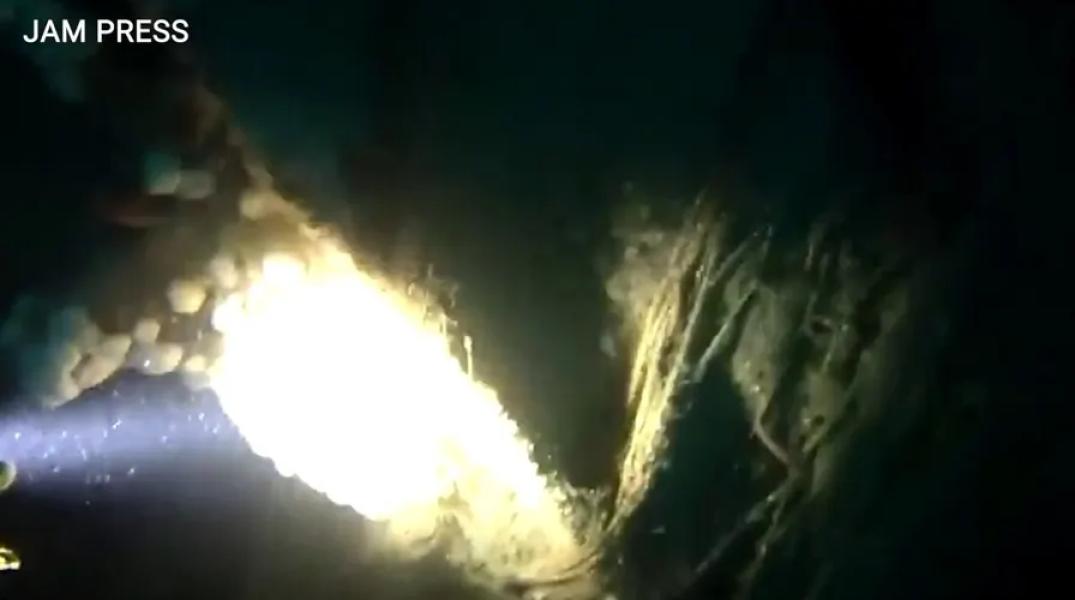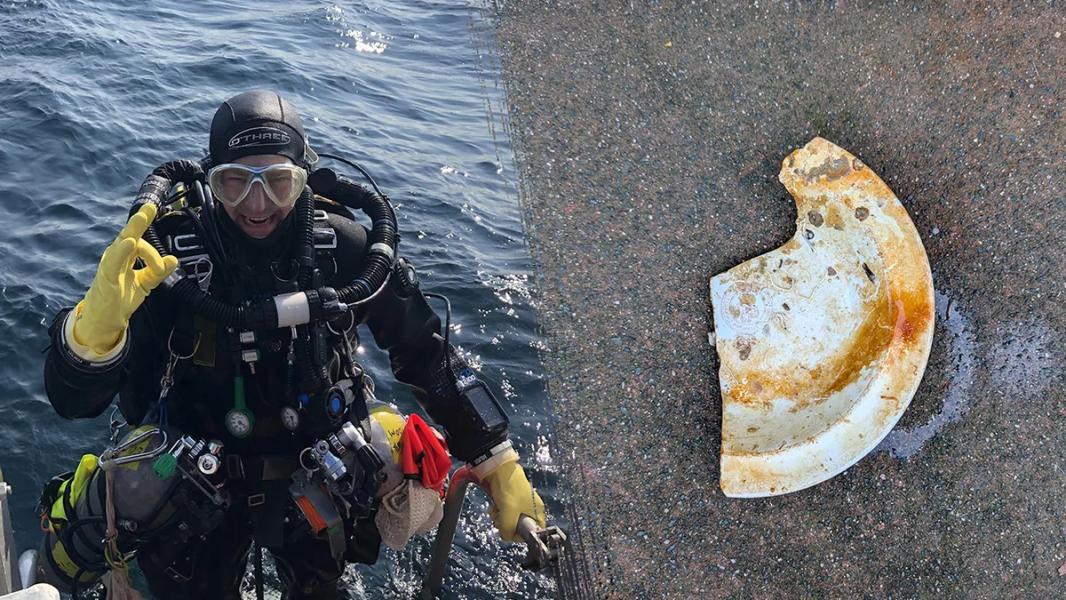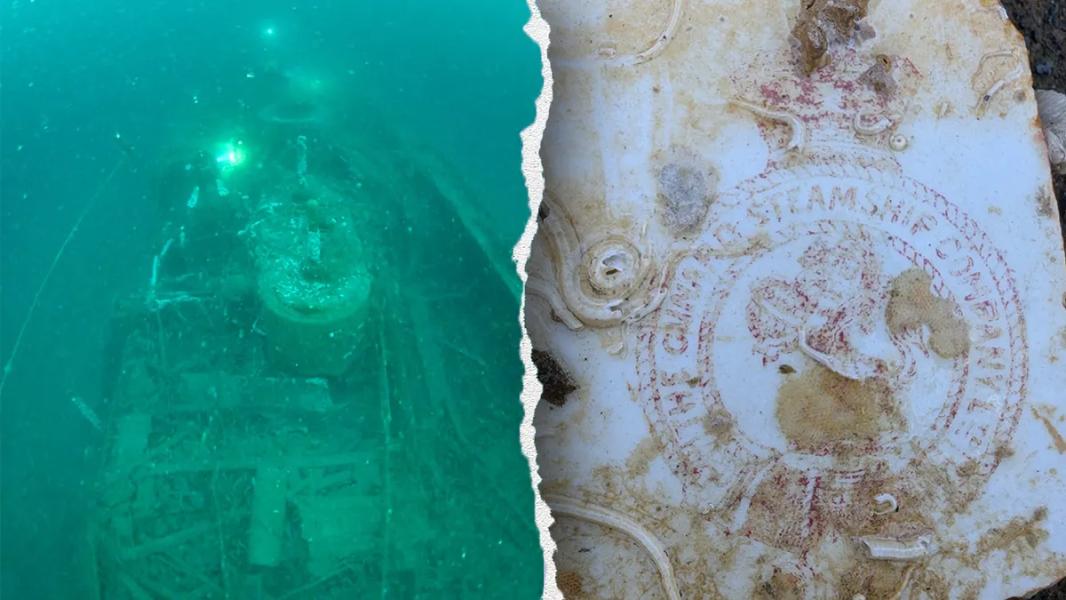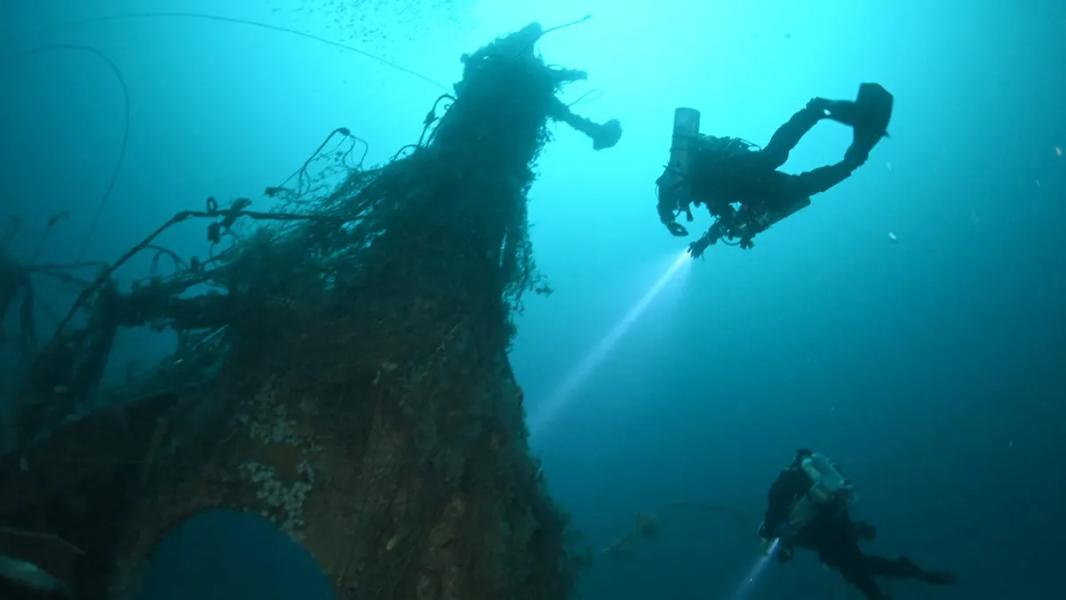
Video: Divers identify 19th-century shipwreck after finding Cunard Line plaque in wreckage
Divers have recently identified the wreck of the SS Nantes, which disappeared 140 years ago, thanks to the discovery of a broken Cunard Line plate, revealing more about the tragic incident in 1888. (Photo: Jam Press)
NEWYou can now listen to Fox News articles!
Divers recently found a long-lost ship that sank nearly 140 years ago – and it was all made possible by a single piece of debris.
Dominic Robinson, a former British Army officer who served in Plymouth, England, identified the wreck as the SS Nantes. The ship was built in Glasgow, Scotland, in 1874.
Robinson, who was a military helicopter pilot, told Jam Press that the vessel collided with the German ship Theodor Ruger in 1888.
“It sank while en route from Liverpool to Le Havre in France carrying a cargo of coal,” Robinson told the news agency.
The incident proved disastrous: most of the Nantes crew perished in the English Channel.

Former British Army officer Dominic Robinson (left) identified the wreck of the SS Nantes thanks to a broken plaque. (Jam Press)
“Unfortunately, almost everyone on board the Nantes died,” Robinson said.
“It drifted for several hours before eventually sinking, unfortunately with many of the crew on board.”
Robinson added that three people survived the disaster: two men jumped aboard the Theodore Ruger, and one remained on the Nantes and tried to keep the ship afloat.
“Unfortunately, the Nantes sank about 10 hours later, early in the morning, and he was the only person who was saved,” the researcher said.
“It's quite a sad story.”

The Cunard logo on the broken plate on the right helped researchers identify the ship. (Jam Press)
The ship remained unnoticed for nearly 140 years. A local diving team discovered the wreckage last year, but its identity remained unknown until now.
The key to identifying the ship was a broken plate with the logo of Cunard Line, a well-known British cruise company.
“It's no surprise that it was this plate that provided us with the most important clue.”
Robinson argues that identifying the ship would require an attempt to compile a list of all Cunard wrecks.
“Then you try to narrow them down to something that's relatively small and old,” he explained.
“We know, of course, where it sank, so if we can find information about the sinking and the wreck that connects all these facts, it will be quite easy to identify it.”

Robinson said the ship sank while en route from Liverpool to Le Havre, France. It was carrying coal at the time. (Jam Press)
Using data from the UK Hydrographic Office, the team was also able to confirm the length of the Nantes, which was around 260 feet.
Determining the length of the wreck, as well as the Cunard number plate, played a crucial role in its identification.
“It's no surprise that [this plate] provided us with the most important clue,” he said.
The discovery comes as marine archaeologists around the world discover numerous shipwrecks every year.
Sourse: www.foxnews.com





